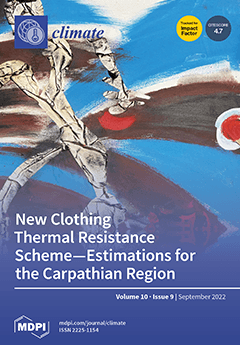Understanding public perceptions on the health impacts of climate change will help to better address planetary health challenges. This study aimed to assess differences in perceptions in the Cypriot population regarding climate-related health risks, information sources used, and self-assessed health status over a
[...] Read more.
Understanding public perceptions on the health impacts of climate change will help to better address planetary health challenges. This study aimed to assess differences in perceptions in the Cypriot population regarding climate-related health risks, information sources used, and self-assessed health status over a three-year period, along with the relationship between sociodemographics and perceptions on climate-related health risks. Two cross-sectional surveys on environmental health risks and climate change, information sources, and self-assessed health were conducted in July–December 2018 (
n = 185) and August–September 2021 (
n = 202) among adults living in Cyprus. A descriptive analysis of the survey responses was conducted. Between-survey and within-survey associations were examined among environmental and health risk perceptions and stratified by sociodemographics (age, sex, educational level) using chi-square tests. The perceived views on most questions about environmental health risks and climate change were not different between the two surveys (
p > 0.05). With environmental factors in mind, such as climate change, pollution, and toxic waste, most respondents (>72%) considered that health issues such as asthma, cancer, obesity, type II diabetes, and high blood pressure would occur much more often or somewhat more often in the next 10 years. In both surveys, the most popular sources of information about environmental health risks were social media/the internet, followed by TV news and TV films and documentaries. Notable differences in several perceptions on climate-related health risks were observed between females and males, while age and educational level did not influence most perceptions. Women were more likely than men to report that environmental factors such as temperature rise, extreme weather events, and air pollution will be extremely influenced by climate change (
p < 0.05). The study survey populations recognized the important linkages between climate change and human health, including their drivers. Sex was an important factor for differentiated perceptions on environmental health risks and climate change. Such survey results on perceptions about climate change and their impact on population health can be used to inform public awareness and risk communication campaigns.
Full article





